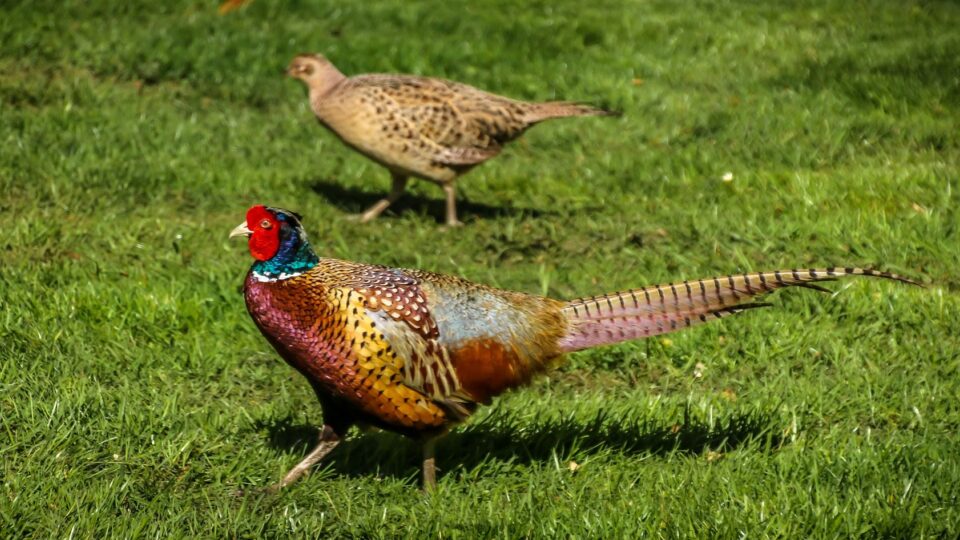Our Pheasants

Ring-necked pheasants (Phasianus colchicus) are Aotearoa New Zealand’s most common pheasants. They were introduced as gamebirds in the mid-19th century from Great Britain.
The common pheasant weighs up to up to 1.5 kilograms and is the largest upland gamebird brought in the country. The male is bigger than the female and has more brightly-coloured feathers. The male is also easily recognisable with a unique red wattle on the cheeks, along with the iridescent blue-green head. Comparatively, the female bird is a lot smaller in body size, with shorter tails and dull-ish coloured feathers.
Juveniles mainly feed on insects, while adults are omnivorous feeding on leaves, seeds, fruits and insects. Adult birds dig in the ground with their beak and claws up to a depth of 8cm for food.
Fun fact! The can often be seen swallowing sharp pebbles to help them grind up tough plant matter in their stomach.
The pheasant populations in New Zealand are kept steady by releases of captive-reared birds. They are now found across the country particularly in farmland and open woodland.

Our Pheasants in Cornwall Park
We’ve actively managed our pheasants since the late 1990s. Due to their success, more pheasants were released into the park in 2008 and 2015 by our staff. You can often spot them near the paddocks close to Huia Lodge. They usually bond in pairs or groups and they are recognised by the distinctive “krok krok” sound made by the males.
Their breeding season lasts from July to March. They make bowl-shaped nests in the grass and can lay up to 15 olive brown-coloured eggs in one clutch. New Zealand hybrid pheasants can live up to 15 years. We don’t manage the pheasants in the park the same way we manage our livestock. Once released, they look after themselves. However, because pheasants nest, forage, and rest close to the ground, it's important to keep your dog on a lead while walking in the park to help protect these ground-dwelling birds.
Pheasants are a valuable indicator of habitat health, as their ground-based breeding habits make them vulnerable to predators. Their presence suggests that predator control—such as rat trapping—is working effectively. Thanks to the efforts of park staff, the Tūpuna Maunga Authority, and our local community involved in the Maungakiekie Songbird Project, our local pheasant population is thriving!
